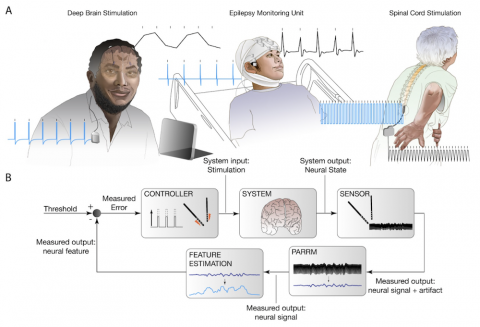Advances in neurotechnology have enabled concurrent electrical neuromodulation and recording of neural signals at adjacent locations in the central nervous system. However, stimulation artifacts obscure the sensed underlying neural activity. Researchers have developed a novel method, termed Period-based Artifact Reconstruction and Removal Method (PARRM), to remove stimulation artifacts from neural recordings by leveraging the exact period of stimulation to construct and subtract a high-fidelity template of the artifact. Benchtop saline experiments, computational simulations, five unique in vivo paradigms across animal and human studies, and an obscured movement biomarker were used for validation. Performance was found to exceed that of state-of-the-art filters in recovering complex signals without introducing contamination. PARRM has several advantages: it is superior in signal recovery, easily adaptable to several neurostimulation paradigms, and low-complexity for future on-device implementation.
Potential Impact
Artifact removal via PARRM will enable unbiased exploration of neural biomarkers that may have previously been obscured by stimulation artifacts. More broadly, PARRM may be applicable in any domain in which a periodic artifact should be removed to recover an underlying signal of interest. While more development is required before PARRM can be applied to perform onboard artifact rejection during concurrent neurostimulation therapy and sensing, PARRM could ultimately contribute to the accurate detection of neural biomarkers and the development of closed-loop neuromodulation therapies. Real-time artifact removal via PARRM could enable unbiased exploration and detection of neural biomarkers to enhance efficacy of closed-loop therapies.
